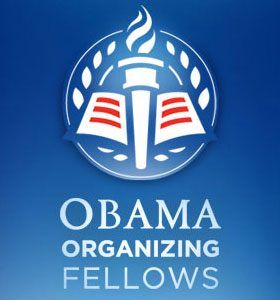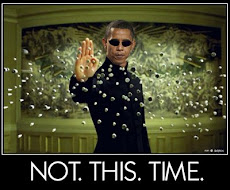Fraser Robinson III and his wife, Marian, with their children, Craig and Michelle, now the first lady.
By RACHEL L. SWARNS and JODI KANTOR Published: October 7, 2009
WASHINGTON — In 1850, the elderly master of a South Carolina estate took pen in hand and painstakingly divided up his possessions. Among the spinning wheels, scythes, tablecloths and cattle that he bequeathed to his far-flung heirs was a 6-year-old slave girl valued soon afterward at $475. Henry Louis Gates Jr., Annette Gordon-Reed and others discuss what Michelle Obama's family tree says about America.
In his will, she is described simply as the “negro girl Melvinia.” After his death, she was torn away from the people and places she knew and shipped to Georgia. While she was still a teenager, a white man would father her first-born son under circumstances lost in the passage of time.
In the annals of American slavery, this painful story would be utterly unremarkable, save for one reason: This union, consummated some two years before the Civil War, represents the origins of a family line that would extend from rural Georgia, to Birmingham, Ala., to Chicago and, finally, to the White House.
Melvinia Shields, the enslaved and illiterate young girl, and the unknown white man who impregnated her are the great-great-great-grandparents of Michelle Obama, the first lady.
Viewed by many as a powerful symbol of black advancement, Mrs. Obama grew up with only a vague sense of her ancestry, aides and relatives said.
During the presidential campaign, the family learned about one paternal great-great-grandfather, a former slave from South Carolina, but the rest of Mrs. Obama’s roots were a mystery.
Now the more complete map of Mrs. Obama’s ancestors — including the slave mother, white father and their biracial son, Dolphus T. Shields — for the first time fully connects the first African-American first lady to the history of slavery, tracing their five-generation journey from bondage to a front-row seat to the presidency.
The findings — uncovered by Megan Smolenyak, a genealogist, and The New York Times — substantiate what Mrs. Obama has called longstanding family rumors about a white forebear.
In his will, she is described simply as the “negro girl Melvinia.” After his death, she was torn away from the people and places she knew and shipped to Georgia. While she was still a teenager, a white man would father her first-born son under circumstances lost in the passage of time.
In the annals of American slavery, this painful story would be utterly unremarkable, save for one reason: This union, consummated some two years before the Civil War, represents the origins of a family line that would extend from rural Georgia, to Birmingham, Ala., to Chicago and, finally, to the White House.
Melvinia Shields, the enslaved and illiterate young girl, and the unknown white man who impregnated her are the great-great-great-grandparents of Michelle Obama, the first lady.
Viewed by many as a powerful symbol of black advancement, Mrs. Obama grew up with only a vague sense of her ancestry, aides and relatives said.
During the presidential campaign, the family learned about one paternal great-great-grandfather, a former slave from South Carolina, but the rest of Mrs. Obama’s roots were a mystery.
Now the more complete map of Mrs. Obama’s ancestors — including the slave mother, white father and their biracial son, Dolphus T. Shields — for the first time fully connects the first African-American first lady to the history of slavery, tracing their five-generation journey from bondage to a front-row seat to the presidency.
The findings — uncovered by Megan Smolenyak, a genealogist, and The New York Times — substantiate what Mrs. Obama has called longstanding family rumors about a white forebear.
While President Obama’s biracial background has drawn considerable attention, his wife’s pedigree, which includes American Indian strands, highlights the complicated history of racial intermingling, sometimes born of violence or coercion, that lingers in the bloodlines of many American-Americans.
In 1870, three of Melvinia’s four children, including Dolphus, were listed on the census as mulatto. One was born four years after emancipation, suggesting that the liaison that produced those children endured after slavery. She gave her children the Shields name, which may have hinted at their paternity or simply been the custom of former slaves taking their master’s surnames. Even after she was freed, Melvinia stayed put, working as a farm laborer on land adjacent to that of Charles Shields, one of Henry’s sons.
But sometime in her 30s or 40s, census records show, Melvinia broke away and managed to reunite with former slaves from her childhood on the Patterson estate: Mariah and Bolus Easley, who settled with Melvinia in Bartow County, near the Alabama border. Dolphus married one of the Easleys’ daughters, Alice, who is Mrs. Obama’s great-great-grandmother.
A community “that had been ripped apart was somehow pulling itself back together,” Ms. Smolenyak said of the group in Bartow County. Still, Melvinia appears to have lived with the unresolved legacy of her childhood in slavery until the very end. Her 1938 death certificate, signed by a relative, says “don’t know” in the space for the names of her parents, suggesting that Melvinia, then in her 90s, may never have known herself.
Sometime before 1888, Dolphus and Alice Shields continued the migration, heading to Birmingham, a boomtown with a rumbling railroad, an iron and steel industry and factories that attracted former slaves and their children from across the South.
Dolphus Shields was in his 30s and very light skinned — some say he looked like a white man — a church-going carpenter who could read, write and advance in an industrializing town. By 1900, he owned his own home, census records show. By 1911, he had opened his own carpentry and tool sharpening business.
But sometime in her 30s or 40s, census records show, Melvinia broke away and managed to reunite with former slaves from her childhood on the Patterson estate: Mariah and Bolus Easley, who settled with Melvinia in Bartow County, near the Alabama border. Dolphus married one of the Easleys’ daughters, Alice, who is Mrs. Obama’s great-great-grandmother.
A community “that had been ripped apart was somehow pulling itself back together,” Ms. Smolenyak said of the group in Bartow County. Still, Melvinia appears to have lived with the unresolved legacy of her childhood in slavery until the very end. Her 1938 death certificate, signed by a relative, says “don’t know” in the space for the names of her parents, suggesting that Melvinia, then in her 90s, may never have known herself.
Sometime before 1888, Dolphus and Alice Shields continued the migration, heading to Birmingham, a boomtown with a rumbling railroad, an iron and steel industry and factories that attracted former slaves and their children from across the South.
Dolphus Shields was in his 30s and very light skinned — some say he looked like a white man — a church-going carpenter who could read, write and advance in an industrializing town. By 1900, he owned his own home, census records show. By 1911, he had opened his own carpentry and tool sharpening business.
A co-founder of First Ebenezer Baptist Church and Trinity Baptist Church, which later became active in the civil rights movement, he supervised Sunday schools at both churches, which still exist today, and at Regular Missionary Baptist Church. “He was the dean of the deacons in Birmingham,” said Helen Heath, 88, who attended church with him. “He was a serious man. He was about business.”
He carried his family into the working-class, moving into a segregated neighborhood of striving black homeowners and renters. In his home, there was no smoking, no cursing, no gum chewing, no lipstick or trousers for ladies and absolutely no blues on the radio, which was reserved for hymns, remembered Bobbie Holt, 73, who was raised by Mr. Shields and his fourth wife, Lucy. She said the family went to church “every night of the week, it seemed like.”
He carried peppermints for neighborhood children, Mrs. Holt said, and told funny stories about his escapades as a boy. But his family struggled. His first wife, Alice Easley Shields, moved around after they split up, working as a seamstress and a maid, and two of their sons stumbled.
Robert Lee Shields, Mrs. Obama’s great-grandfather, married Annie Lawson in 1906 and worked as a laborer and a railroad porter but disappeared from the public record sometime around his 32nd birthday. Willie Arthur Shields, an inventor who obtained patents for improving dry cleaning operations, ended up working as a maintenance man, Mrs. Holt said.
As for his ancestry, Dolphus Shields didn’t talk about it. “We got to the place where we didn’t want anybody to know we knew slaves; people didn’t want to talk about that,” said Mrs. Heath, who said she assumed he had white relatives because his skin color and hair texture “told you he had to be near white.”
At a time when blacks despaired at the intransigence and violence of whites who barred them from voting, from most city jobs, from whites-only restaurants and from owning property in white neighborhoods, Dolphus Shields served as a rare link between the deeply divided communities.
His carpentry shop stood in the white section of town, and he mixed easily and often with whites. “They would come to his shop and sit and talk,” Mrs. Holt said.
Dolphus Shields firmly believed race relations would improve. “It’s going to come together one day,” he often said, Mrs. Holt recalled.
By the time he died in 1950 at age 91, change was on the way. On June 9, 1950, the day that his obituary appeared on the front page of The Birmingham World, the black newspaper also ran a banner headline that read, “U.S. Court Bans Segregation in Diners and Higher Education.” The Supreme Court had outlawed separate but equal accommodations on railway cars and in universities in Texas and Oklahoma.
Up North, his grandson, a painter named Purnell Shields, Mrs. Obama’s grandfather, was positioning his family to seize the widening opportunities in Chicago. But as his descendants moved forward, they lost touch with the past. Today, Dolphus Shields lies in a neglected black cemetery, where patches of grass grow knee-high and many tombstones have toppled.
Mrs. Holt, a retired nursing assistant, said he came to her in a dream last month. She dug up his photograph, never guessing that she would soon learn that Dolphus Shields was a great-great-grandfather of the first lady. “Oh, my God,” said Mrs. Holt, gasping at the news. “I always looked up to him, but I would never have imagined something like this. Praise God, we’ve come a long way.”
Dolphus Shields firmly believed race relations would improve. “It’s going to come together one day,” he often said, Mrs. Holt recalled.
By the time he died in 1950 at age 91, change was on the way. On June 9, 1950, the day that his obituary appeared on the front page of The Birmingham World, the black newspaper also ran a banner headline that read, “U.S. Court Bans Segregation in Diners and Higher Education.” The Supreme Court had outlawed separate but equal accommodations on railway cars and in universities in Texas and Oklahoma.
Up North, his grandson, a painter named Purnell Shields, Mrs. Obama’s grandfather, was positioning his family to seize the widening opportunities in Chicago. But as his descendants moved forward, they lost touch with the past. Today, Dolphus Shields lies in a neglected black cemetery, where patches of grass grow knee-high and many tombstones have toppled.
Mrs. Holt, a retired nursing assistant, said he came to her in a dream last month. She dug up his photograph, never guessing that she would soon learn that Dolphus Shields was a great-great-grandfather of the first lady. “Oh, my God,” said Mrs. Holt, gasping at the news. “I always looked up to him, but I would never have imagined something like this. Praise God, we’ve come a long way.”

-Helen Heath of Birmingham,Alabama, who knew Michelle Obama's great-great-grandfather Dolphus Shields, holds the program from Shields' funeral in 1950. (The Birmingham News / Mark Almond) If Helen Heath were able to talk with Michelle Obama, there's one thing she'd want the first lady to know.
"She certainly should be proud of her heritage," said Heath, a west Birmingham resident. "She came out of a very good family, a very religious family, a very compassionate family, a very morally oriented family.
http://www.nytimes.com/interactive/2009/10/08/us/politics/20091008-obama-family-tree.html?ref=politics








































